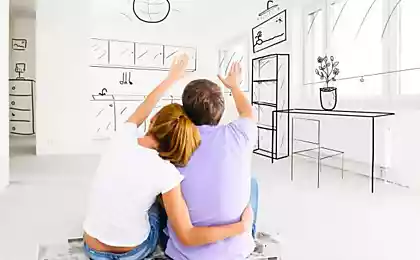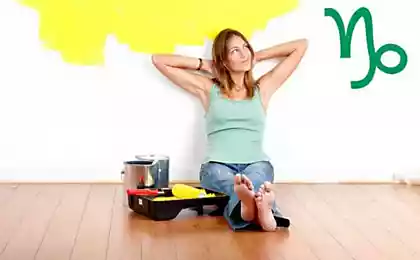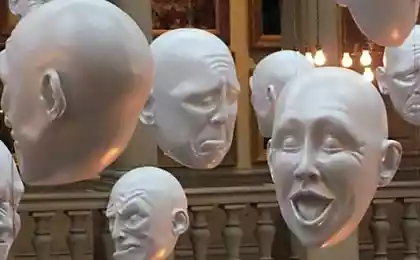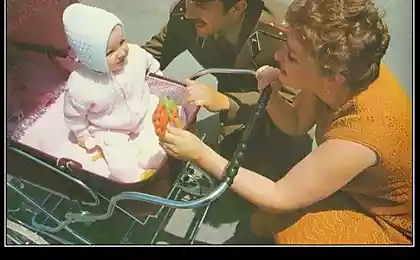239
Few people will remember why the Soviet man beat the doors with dermatine
The first thing that came to mind as an answer was to have warm front doors. Our family moved into a new building in December. The door almost always stood wide open for months. The drafts were good! It is clear: the new settlers first brought materials for repairs, took out construction debris.
Warm front doors Without getting tired on the floors went wanting to earn, as they said then, hacks. This insulting word does not reflect the truth. People who informally offered repair services at their own risk, as a rule, worked efficiently, quickly. They had samples of upholstery materials, so the owners agreed in a matter of minutes with the masters. And in the shortest time, the warm front doors were ready. However, it is likely that repair services were not always in the shadows, because in the 1980s, various cooperatives were actively developing. But hardly everyone has documented such work.

I leaf out the “Short Encyclopedia of Household Economy”, published in 1987 by the Moscow publishing house “Soviet Encyclopedia”. In the section “Housing” I find the article “Door upholstery”. I read: "For insulation and sound insulation, doors are covered with a soft material, usually cotton wool, foam, on top of the thermal insulation material is covered with glue, dermatine or plastic." So it wasn't just dermatin.
Warm front doors and glue: a myth? I assume that since such a solid edition in the list of upholstery materials, abandoning the alphabetical principle, the first point does not indicate the dermatian, and gluten, then, most likely, it was she who was most often used as upholstery. But I can't remember seeing a cloth door anywhere. And you?

But everywhere, pasting the walls of bathrooms and kitchens, gluten was used as a substitute for tiles that were scarce in those days, because the gluten is quite easy to wash.
In our house for 108 apartments there was not a single front door, upholstered with plaster or plastic. Based on this observation, we can assume that other materials are not as convenient and affordable as the notorious dermatin.

I think it's because of its accessibility that it's used so widely. Massive wooden doors in the open market? At the finish line of Soviet history, they could be ordered individually. But quality wood is already scarce. And cost such a strong and warm front doors are much more expensive installed massively in new buildings.
And immediately it seems that the door in Soviet times began to lose the meaning of the symbol of security, immunity. Neighbors, kindergarten teachers, school teachers, trade union committees and party organizations unceremoniously interfered in personal space, not to mention law enforcement and state security bodies. It is said that even in many public toilets there were no doors! Is it surprising that people tried to somehow strengthen the sign of the boundaries of their space?

Less noise, unpleasant smells penetrated into the house from the entrance thanks to such a simple trick. In some sources you can read that people covered the doors with dermatine to “neighbors envied” or “beauty”. Are you funny? Me too.

However, I know the story of a couple who was one of the first in Khrushchev – we are talking about a house on Borschagovka, not the most cozy and safe area of Kiev – put a metal front door. So they immediately staged a camouflage on top - upholstery with dermatine burgundy color. Not to stand out from the background. Vera Fedotovna, however, often had to wash the door of chalk, which she painted young lovers of painting and calligraphy. But that's another story.
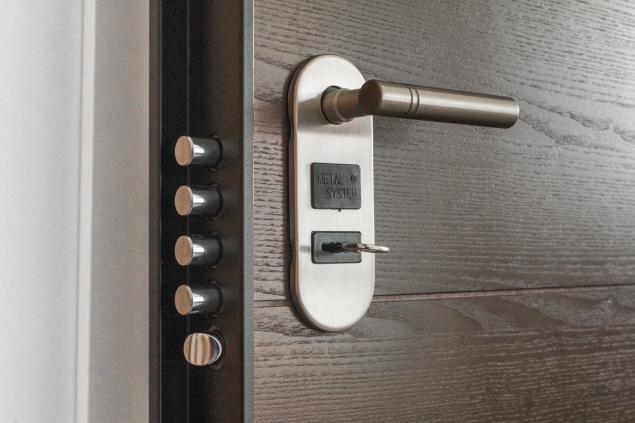
Instead of A’s conclusions, more people and countries should learn that borders, whether they represent concrete impregnable walls, warm front doors, or simply written or spoken words, are inviolable.
Warm front doors Without getting tired on the floors went wanting to earn, as they said then, hacks. This insulting word does not reflect the truth. People who informally offered repair services at their own risk, as a rule, worked efficiently, quickly. They had samples of upholstery materials, so the owners agreed in a matter of minutes with the masters. And in the shortest time, the warm front doors were ready. However, it is likely that repair services were not always in the shadows, because in the 1980s, various cooperatives were actively developing. But hardly everyone has documented such work.

I leaf out the “Short Encyclopedia of Household Economy”, published in 1987 by the Moscow publishing house “Soviet Encyclopedia”. In the section “Housing” I find the article “Door upholstery”. I read: "For insulation and sound insulation, doors are covered with a soft material, usually cotton wool, foam, on top of the thermal insulation material is covered with glue, dermatine or plastic." So it wasn't just dermatin.
Warm front doors and glue: a myth? I assume that since such a solid edition in the list of upholstery materials, abandoning the alphabetical principle, the first point does not indicate the dermatian, and gluten, then, most likely, it was she who was most often used as upholstery. But I can't remember seeing a cloth door anywhere. And you?

But everywhere, pasting the walls of bathrooms and kitchens, gluten was used as a substitute for tiles that were scarce in those days, because the gluten is quite easy to wash.
In our house for 108 apartments there was not a single front door, upholstered with plaster or plastic. Based on this observation, we can assume that other materials are not as convenient and affordable as the notorious dermatin.

I think it's because of its accessibility that it's used so widely. Massive wooden doors in the open market? At the finish line of Soviet history, they could be ordered individually. But quality wood is already scarce. And cost such a strong and warm front doors are much more expensive installed massively in new buildings.
And immediately it seems that the door in Soviet times began to lose the meaning of the symbol of security, immunity. Neighbors, kindergarten teachers, school teachers, trade union committees and party organizations unceremoniously interfered in personal space, not to mention law enforcement and state security bodies. It is said that even in many public toilets there were no doors! Is it surprising that people tried to somehow strengthen the sign of the boundaries of their space?

Less noise, unpleasant smells penetrated into the house from the entrance thanks to such a simple trick. In some sources you can read that people covered the doors with dermatine to “neighbors envied” or “beauty”. Are you funny? Me too.

However, I know the story of a couple who was one of the first in Khrushchev – we are talking about a house on Borschagovka, not the most cozy and safe area of Kiev – put a metal front door. So they immediately staged a camouflage on top - upholstery with dermatine burgundy color. Not to stand out from the background. Vera Fedotovna, however, often had to wash the door of chalk, which she painted young lovers of painting and calligraphy. But that's another story.

Instead of A’s conclusions, more people and countries should learn that borders, whether they represent concrete impregnable walls, warm front doors, or simply written or spoken words, are inviolable.
Earthquake in Turkey and Syria lusts, people under rubble, death toll rises
Types of metal anchors and their applications


